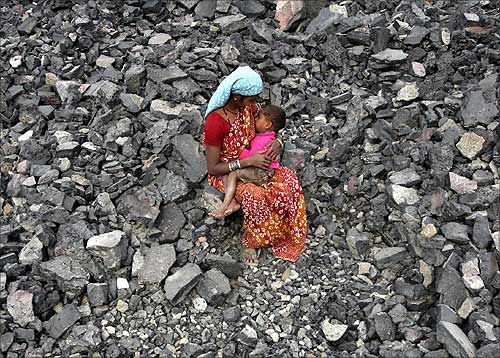 Changes in labour laws to encourage the absorption of labour into industry will run into opposition from trade unions. Unions represent less than 15 per cent of the workforce, but they have their hooks in every major political formation, says Devangshu Datta.
Changes in labour laws to encourage the absorption of labour into industry will run into opposition from trade unions. Unions represent less than 15 per cent of the workforce, but they have their hooks in every major political formation, says Devangshu Datta.
The World Bank's latest review of its purchasing power parity (PPP) baseline will reignite the poverty debate. Why does this poverty number change so much if the World Bank reworks its PPP? Do those numbers seem intuitively correct?
All the wrangling would be funny if it did not have a long-term impact on policy and, ultimately, on the lives of millions.
Other statistical prisms can be used to examine Indian policy, and these are less controversial. These may also be more illuminating when it comes to indicating optimal policy direction.
For example, we know that the Central Statistics Office reckoned that the relative contributions of agriculture, industry and services amounted to about 14 per cent, 22 per cent and 64 per cent respectively (assuming that construction is counted as a service) circa 2012-13.
The labour force amounted to about 488 million in 2012 according to the Bureau of Labour Statistics. Of this force, about 4.7 per cent were unemployed, according to the bureau. Out of the employed workforce, 49 per cent received their primary earnings from agriculture, while 20 per cent were employed in industry and 31 per cent in services.
Those numbers are snapshots, and they are probably somewhat inaccurate. But they indicate very clearly the underlying problems that lead to the vast inequalities characteristic of India. Half the workforce is stuck in a segment that contributes less than a seventh of the gross domestic product (GDP).
What is more, trend growth rates are much higher in both manufacturing and services than in agriculture, implying that agriculture will contribute even less to future GDP share.
A look at historical growth patterns across the world suggests that this is indeed a likely outcome. Most developed nations have a low dependence on agriculture. Agriculture often contributes five per cent or so of GDP in developed nations. Most developed nations also have a small, highly mechanised workforce in agriculture.
India is somewhat unusual in another respect. Most nations go through a phase where industry grows very quickly and becomes the dominant economic driver.
Gradually, industry is replaced by services as the growth driver as the economy matures. India skipped this phase. It went from being a highly agricultural economy - with agriculture contributing 52 per cent of GDP in 1950-51 - to being a services-oriented economy.
Inequalities exist in other nations, and there can be many underlying reasons. But there is no chance of reducing India's inequalities in a significant fashion while there are such high sector-specific imbalances in terms of occupations. This means the workforce must shift out of agriculture into services and manufacturing.
Again, historical patterns back this assertion about the necessity for labour transition. History indicates that most developed nations saw a vast shift of workforce, with labour moving out of agriculture into industry and later, a more gradual shift into services from industry.
It is also true that it is easier for an unskilled agricultural labourer to find a job in a factory or in construction than in white-collar services.
That said, Indian policy should be clear. Encourage the growth of industry and services; develop training modules that enable landless rural labour to rapidly pick up the skills required for basic factory and services jobs; encourage urbanisation, because urban clusters automatically create this sort of employment opportunity.
Conversely, discourage surplus labour from hanging around villages looking for seasonal work.
Sadly, it has never been politically expedient to do the economically logical. Changes in labour laws to encourage the absorption of labour into industry will run into opposition from trade unions. Unions represent less than 15 per cent of the workforce, but they have their hooks in every major political formation.
Buying land has actually become more difficult and expensive after changes in the relevant legislation. And the Mahatma Gandhi National Rural Employment Guarantee Act actively encourages surplus labour to hang around and effectively do nothing in the village, rather than move to a city in search of work.










